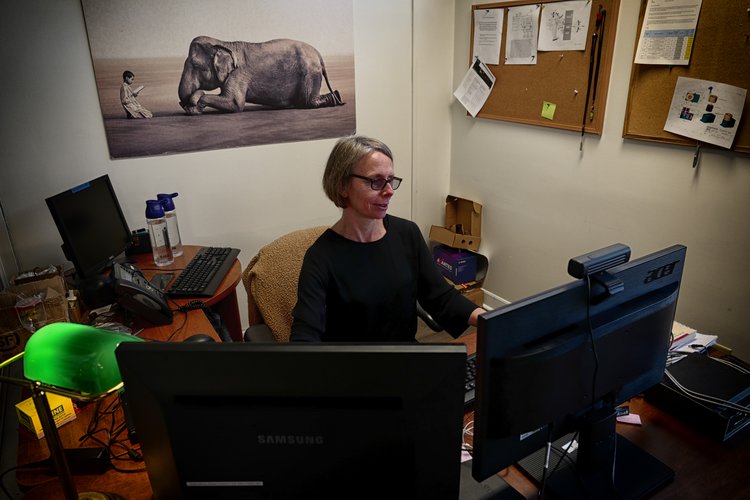Not known Details About Uv/vis
Table of ContentsThe Ultimate Guide To Circular DichroismRumored Buzz on Circular DichroismAll about SpectrophotometersThe Greatest Guide To SpectrophotometersThings about Circular Dichroism

Although spectrophotometry is most typically used to ultraviolet, noticeable, and infrared radiation, modern spectrophotometers can question wide swaths of the electromagnetic spectrum, including x-ray, ultraviolet, noticeable, infrared, and/or microwave wavelengths. Spectrophotometry is a tool that depends upon the quantitative analysis of molecules depending upon just how much light is soaked up by colored compounds.
The 5-Minute Rule for Uv/vis/nir
A spectrophotometer is frequently utilized for the measurement of transmittance or reflectance of services, transparent or opaque solids, such as polished glass, or gases. Lots of biochemicals are colored, as in, they absorb noticeable light and therefore can be measured by colorimetric procedures, even colorless biochemicals can often be converted to colored compounds suitable for chromogenic color-forming responses to yield compounds ideal for colorimetric analysis.: 65 Nevertheless, they can likewise be designed to determine the diffusivity on any of the noted light ranges that usually cover around 2002500 nm utilizing various controls and calibrations.
An example of an experiment in which spectrophotometry is used is the decision of the equilibrium constant of a service. A certain chain reaction within an option may happen in a forward and reverse direction, where reactants form products and items break down into reactants. At some time, this chain reaction will reach a point of balance called a stability point.
The Best Guide To Spectrophotometers
The amount of light that goes through the solution is a sign of the concentration of particular chemicals that do not enable light to go through. The absorption of light is due to the interaction of light with the electronic and vibrational modes of particles. Each type of particle has a specific set of energy levels associated with the makeup of its chemical bonds and nuclei and hence will absorb light of particular wavelengths, or energies, leading to distinct spectral homes.
Making use of spectrophotometers spans various clinical fields, such as physics, materials science, chemistry, biochemistry. spectrophotometers, chemical engineering, and molecular biology. They are extensively used in many industries consisting of semiconductors, laser and optical production, printing and forensic assessment, as well as in laboratories for the study of chemical substances. Spectrophotometry is often used in measurements of enzyme activities, determinations of protein concentrations, decisions of enzymatic kinetic constants, and measurements of ligand binding reactions.: 65 Eventually, a spectrophotometer has the ability to identify, depending on the control or calibration, what compounds are present in a target and precisely how much through computations of observed wavelengths.
Created by Arnold O. Beckman in 1940 [], the spectrophotometer was produced with the aid of his coworkers at his business National Technical Laboratories founded in 1935 which would become Beckman Instrument Company and eventually Beckman Coulter. This would come as an option to the previously produced spectrophotometers which were unable to take in the ultraviolet properly.
The Greatest Guide To Uv/vis/nir
It would be found that this did not offer satisfying outcomes, therefore in Design B, there was a shift from a glass to a quartz prism which permitted much better absorbance results - UV/Vis (http://www.cartapacio.edu.ar/ojs/index.php/iyd/comment/view/1414/0/30215). From there, Design C was born with a change to the wavelength resolution which wound up having three units of it produced
It was produced from 1941 to 1976 where the price for it in 1941 was US$723 (far-UV devices were an alternative at additional expense). In the words of Nobel chemistry laureate Bruce Merrifield, it was "probably the most crucial instrument ever developed towards the advancement of bioscience." Once it became terminated in 1976, Hewlett-Packard created the first commercially offered diode-array spectrophotometer in 1979 understood as the HP 8450A. It irradiates the sample with polychromatic light which the sample absorbs depending on its properties. Then it is transmitted back by grating the photodiode selection which detects the wavelength area of the spectrum. Given that then, the production and implementation of spectrophotometry gadgets has actually increased exceptionally and has ended up being one of the most innovative instruments of our time.

All About Spectrophotometers
Historically, spectrophotometers use a monochromator consisting of a diffraction grating to produce the analytical spectrum. The grating can either be movable or repaired. If a single detector, such as a photomultiplier tube or photodiode is used, the grating can be scanned stepwise (scanning spectrophotometer) so that the detector can determine the light intensity at each wavelength (which will represent each "action").
In such systems, the grating is fixed informative post and the intensity of each wavelength of light is measured by a various detector in the selection. When making transmission measurements, the spectrophotometer quantitatively compares the fraction of light that passes through a recommendation service and a test solution, then digitally compares the intensities of the 2 signals and computes the portion of transmission of the sample compared to the recommendation standard.
